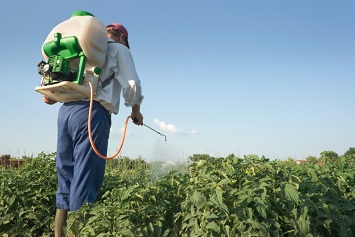Following discussions with agricultural establishments and State Lead Agencies (SLA), the EPA is proposing amendments to the Application Exclusion Zone (AEZ) requirements of the Agency’s Worker Protection Standard ((WPS), 40 CFR part 170). According to the Agency, the “modest” amendments will improve enforceability for SLAs and reduce regulatory burdens for farmers.

WPS and Amendments
Introduced in 1992, the WPS requires that the pesticide handler’s employer and the pesticide handler must ensure that no pesticide is applied so as to contact, either directly or through drift, any agricultural worker or other person other than an appropriately trained and equipped pesticide handler involved in the application.
In its 2015 amendments to the WPS, the EPA added the AEZ requirement. This provision directs that pesticide handlers must suspend a pesticide application if workers or other persons are in the AEZ. The Agency describes the AEZ as a “horizontal circle” surrounding the application equipment, which moves with the application equipment.
The size of the AEZ depends on the method of application. For example, when the pesticide is sprayed from a height no greater than 12 inches, the AEZ is 25 feet (ft). Other application methods, including aerial application, require an AEZ of 100 ft. Because the AEZ is based on the location of the application equipment, not the location of the treated area, the AEZ could extend beyond the boundary of the agricultural establishment. Employers and applicators must ensure that workers in adjacent fields or buildings within their establishment move out of an AEZ as the pesticide application equipment passes; workers could return once the equipment has moved on.
Enforcement ‘Next to Impossible’
“Following promulgation and implementation of the 2015 amendments, organizations representing state regulatory agencies and agricultural interests raised concerns about the ability of states to enforce the requirement, expressed a need for clarity about how the requirement was intended to work, described problems with worker housing near treated areas, and the perception of increased burden on the regulated community,” the EPA states in its proposal. Specific concerns raised by stakeholders include the following:
- The concept of a regulatory requirement to keep individuals out of varying widths of areas surrounding treated areas seems difficult for an agricultural employer to implement and next to impossible for SLAs trying to ensure compliance.
- The AEZ concept was presented in the 2014 WPS proposal as an entry restricted area. In the final 2015 WPS rule, the EPA replaced the term entry restricted area with application exclusion zone to make it distinct from the requirements regarding Restricted Entry Interval. However, this change was not clear to the commenters. The commenters suggested that the concept of the AEZ was not proposed and neither was the idea of the AEZ extending beyond the boundary of the establishment. They suggested that this approach was not well thought out, was not open for public comment, and was not in the spirit of coregulating with states and tribes.
- Burdens and economic impacts upon agricultural operations and employers were not considered or addressed. One commenter likened this provision of the rule to an unlawful taking of private property.
- The AEZ requirement to cease application if a passing vehicle is within 25 or 100 ft of the property could be problematic.
Proposed Revisions
Specifically, the proposed revisions would:
- Limit the AEZ to within the boundaries of the agricultural establishment.
- Clarify conditions under which a handler may resume the application after having to suspend an application if people are in the AEZ on the agricultural establishment.
- Clarify how the AEZ applies to persons not employed by the agricultural establishment who may be working on or in easements (e.g., gas, mineral, utility, or wind/solar energy) that may be within the boundaries of the establishment.
- Revise the WPS to clarify that handlers may resume a suspended application when no workers or other persons (other than appropriately trained and equipped handlers involved in the application) remain in an AEZ within the boundaries of the establishment.
- Revise handler training content to reflect that proposed change.
Protections Remain
The EPA adds that it is not proposing any changes to existing provisions in the 2015 WPS that prohibit a handler/applicator and the handler employer from applying a pesticide in such a way that it contacts workers or other persons directly or through drift (other than appropriately trained and equipped handlers involved in the application).
“This provision will remain the key mechanism for ensuring the protections of individuals off the establishment from the potential exposures to pesticides from nearby agricultural pesticide applications,” says the Agency.
